What I Treat
Obsessive Compulsive Disorder
Obsessive Compulsive Disorder
Obsessive Compulsive Disorder, or OCD, is thought of as the doubting disease and is characterized by the presence of obsessive thoughts, compulsive behaviors, or both. Obsessive thoughts are recurrent and persistent unwanted thoughts, urges, or impulses that are experienced as intrusive and cause distress. Read More
Generalized Anxiety Disorder
Generalized Anxiety Disorder
Generalized Anxiety Disorder, or GAD, is characterized by excessive worry occurring more days than not for 6 or more months about a number of events or activities of daily living. Generalized anxiety differs from OCD in that it is not focused on obsessive doubts about reality but is excessive worry about a variety of things in reality. Read MoreIllness Anxiety Disorder
Illness Anxiety Disorder
Illness Anxiety Disorder, or health anxiety, is characterized by persistent, excessive preoccupation with having or acquiring a serious illness or disease. Individuals with Illness Anxiety Disorder experience intense anxiety about personal health, are easily alarmed about personal health, and engage in excessive health-related safety behaviors such as checking for symptoms, researching, and/or avoidance behaviors, all of which cause functional impairment and distress. Read More.Specific Phobias
Specific Phobias
Specific Phobias are characterized by excessive fear or anxiety about a specific object or situation that is out of proportion to the actual threat posed by the object or situation within the sociocultural context. Read More.Hoarding Disorder
Hoarding Disorder
Hoarding Disorder is characterized by a persistent difficulty with discarding or parting with possessions regardless of their value, a perceived need to save possessions and distress associated with discarding them, accumulation of possessions that congest or clutter the living space and compromises intended use (or living spaces are only un-cluttered because of third parties), distress and functional impairment due to the hoarding behavior, and can include excessive acquisition.
Panic Disorder
Panic Disorder
Panic disorder is characterized by recurrent panic attacks followed by one month or more of persistent worry about having additional panic attacks or about the consequences of having them (fears of losing control, having a heart attack, “going crazy”) and/or maladaptive changes in behavior related to the panic attacks (avoidance, safety behaviors). Read MoreAgoraphobia
Agoraphobia
Agoraphobia is characterized by persistent, excessive fear about situations including using public transportation, being in open spaces (parking lots, markets, bridges), being in enclosed places (shops, theaters, malls, concert venues, sporting events), standing in line or being in a crowd, and/or being outside of the home alone. Read MoreBody Dysmorphic Disorder
Body Dysmorphic Disorder
Body Dysmorphic Disorder is characterized by excessive preoccupation with one or more perceived physical defects/flaws that are not observable (or are out of proportion) to others. Read MoreSocial Anxiety
Social Anxiety
Social Anxiety Disorder, or SAD, is characterized by excessive fear about social situations in which an individual may be exposed to scrutiny. Individuals with social anxiety fear they may act in a way that will be negatively evaluated by others or will lead to embarrassment or rejection. Individuals with social anxiety feel fear in almost any social situation and often avoid social situations or endure them with intense anxiety. Social anxiety must be persistent, be out of proportion to the actual threat within the sociocultural context, and cause significant distress and functional impairment.
Body-Focused Repetitive Behaviors
Body-Focused Repetitive Behaviors
Body-Focused Repetitive Behaviors, or BFRBs, include Trichotillomania, or hair-pulling disorder, and Excoriation Disorder, or skin-picking disorder. Another common body-focused repetitive behavior is cheek/lip biting. BFRBs differ from self-harm in that the aim of BFRBs are not to harm the self but to correct a perceived imperfection, self-soothe when distressed or bored, and/or BFRBs become an automatic, repetitive habit. Read MoreMood & Personality Disorders
Mood & Personality Disorders
While my main focus is treating OCD and Anxiety Disorders, I also am trained in evidence-based therapy modalities for co-occurring Mood Disorders including Depressive Disorders, Bipolar Disorders, Borderline Personality Disorder, and Obsessive Compulsive Personality Disorder.


